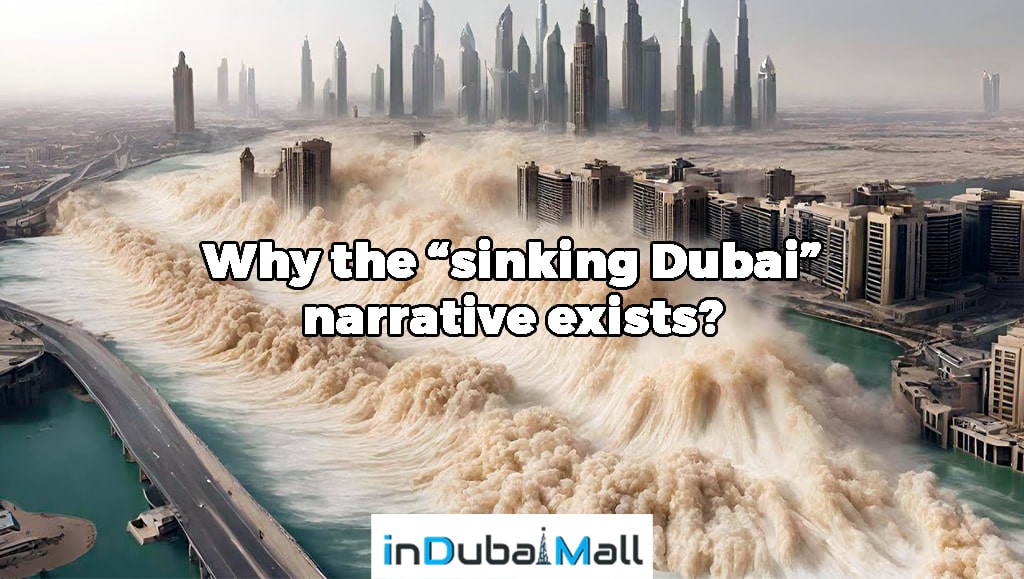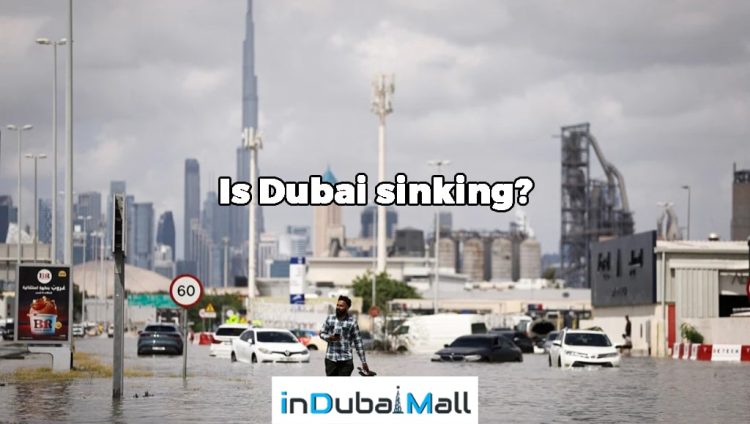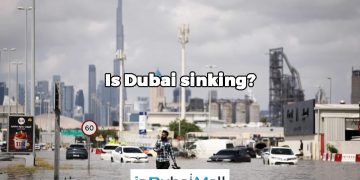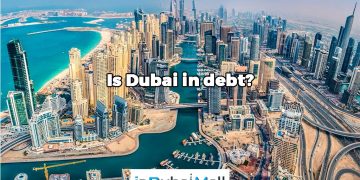Dubai is a city known for its bold design projects and luxurious lifestyle, and it has gained global attention for its man-made islands. From the famous Palm Jumeirah to the striking The World, these artificial island groups show off Dubai’s rapid growth and its desire to position itself as a top luxury destination. However, despite their initial appeal, there are growing concerns that Dubai’s islands might be a risky investment. Is Dubai sinking, too? A new study found that Dubai is among the 36 cities globally that will be the first to face flooding because of climate change and the negative effects of land reclamation. Even though Dubai does have real environmental problems, there’s no scientific proof that the city itself is sinking. The story still lives on because it shows the conflict between fast city growth and the natural world in one of the most extreme built places on Earth. In this article on Indubaimall, we’ll take an in-depth look at why experts say that Dubai will be underwater.
Why the “sinking Dubai” narrative exists?
The idea that Dubai is sinking came from a mix of confusion, dramatic media stories, and real environmental worries. This idea came to the mind when some reports said that parts of Dubai’s man-made islands such as The World and Palm Jumeirah, were sinking a little. This is actually a normal thing that happens with land that’s been built up from the sea. But the media made a big deal out of it, leading people to think the whole city is sinking. Let us considider some of the factors that cause people think about ‘is Dubai sinking?’ in the following parts

The artificial islands boom (Palm Jumeirah, The World, Palm Deira)
Dubai is renowned for its man-made islands that hold the record for being the largest artificial archipelago in the world. While we are most familiar with Palm Jumeirah, the man-made island construction project actually consists of three phases that are The Palm Islands, The World, and The Universe. Unfortunately, all of these projects were created through land reclamation using sand and rocks, meaning the islands will erode over time, and this process is already underway. The engineers of Palm Jumeirah anticipated Dubai Palm islands sinking and used a technique called “vibro compaction” to press the millions of pounds of sand together, making it solid enough to construct upon.
Reports of subsidence, erosion and sinking in dubai
Reports of the world islands Dubai sinking, erosion, and coastal changes in Dubai mostly focus on the man-made areas along the coast, rather than the main land part of the city. Research and satellite images show that some artificial islands, such as The World and parts of Palm Jumeirah, have slowly settled over time. This settling happens naturally as the sand used to build these areas compacts, causing a slight drop—usually a few millimeters to a few centimeters each year. Erosion also affects the edges of these islands, partly because dredging projects changed the natural flow of tides and weakened the sand and soil around the shorelines. Some early news stories made it seem like the whole city was sinking, but in reality, these issues were only happening in specific places and were expected based on how such projects are built. Problems such as poor maintenance, stopped construction, and not enough protection against the sea have made some areas more at risk of damage from erosion and flooding.
Sea-level rise & coastal risk in the Arabian Gulf
Dubai has approximately 72 kilometers of coastline, which makes the city particularly at risk from flooding as sea levels continue to rise. The United Arab Emirates (UAE) is among the countries most vulnerable to the impacts of climate change. Data from NASA satellites and Palm Jumeirah sinking NASA shows that sea levels are increasing by 3.22 millimeters each year. If this trend continues, Dubai and other coastal areas in the UAE could be submerged by the year 2100. The United Nations Intergovernmental Panel on Climate Change has also reported that sea levels could rise by 0.76 meters by 2100. This could result in the UAE losing up to 5,000 square kilometers of land by that time. A Sea Level Rise (SLR) Projection Map from Earth.org illustrates how much of Dubai could be underwater by 2100, potentially displacing up to 31% of the city’s population.
How big is the risk — and for whom?
How fast is Dubai sinking? The risk of subsidence and erosion in Dubai is not widespread, but it is serious for some people involved. The main part of the city has little geological risk because it is built on solid desert land. However, the man-made coastal areas such as Palm Jumeirah, Palm Jebel Ali, and The World Islands are more at risk. These areas can slowly sink, lose their shorelines, and they face with flooding if they aren’t well maintained.


The main people affected are property owners, developers, and investors, because their assets might lose value or they will be need expensive fixes. Those who manage infrastructure, such as utilities, marinas, and coastal defenses, also have to deal with ongoing repair costs. Over time, environmental changessuch as rising sea levels and coastal erosion could harm marine life and it affect on tourism of Dubai. Although the risk isn’t huge, but it is ongoing and builds up over time. Without proper management, these issues could lead to major economic and environmental problems in the future. Future growth and planning in the city need to be taken into account the influence of land reclamation activities and the changing conditions brought about by climate change.























